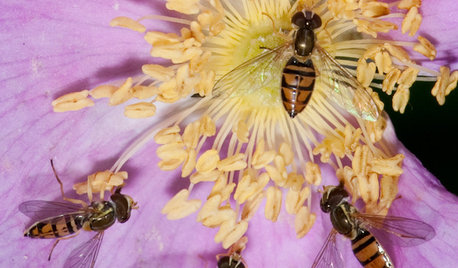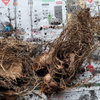Several of these formations are growing on a wild rose bush in my sister's yard.
{{gwi:301000}}
Diplolepis rosae gall wasp formation
*Classification
Gall wasps are in the family Cynipidae, order Hymenoptera, class Insecta, phylum Arthropoda.
Gall wasps are small (only a few millimetres long), dark-coloured insect with a compressed abdomen. Most gall wasps form galls, though a few live within the galls formed by other species; these are called inquilines. Others feed on gall-formers and inquilines.
The exact reactions which lead to gall formation in the host plant are little understood. Basically it is a reaction of the cells of the plant to the presence of the larva.
Rose galls are produced by Diplolepis rosae. These gall wasps usually reproduce asexually; the females are about 4 mm/0.2 in long; parts of their abdomens and legs are yellow-red, while the rest of the body is black. Males of this species have been observed only rarely. The galls are a mass of reddish filaments within which are found a number of sealed chambers enclosing larvae. The larvae feed on the gall tissue.
*(this info credited to © Research Machines plc 2005)
They look like some kind of bizarre flower and are about the size of a golf ball.
Cheers,
MG








cailinriley
mora
Related Professionals
Norfolk Landscape Architects & Landscape Designers · West Milford Landscape Architects & Landscape Designers · Graham Landscape Architects & Landscape Designers · Allentown Landscape Contractors · Dedham Landscape Contractors · Ellensburg Landscape Contractors · Hayward Landscape Contractors · Monterey Landscape Contractors · Morrisville Landscape Contractors · Rockland Landscape Contractors · Seven Hills Landscape Contractors · St. Louis Landscape Contractors · Antioch Landscape Contractors · North Hills Landscape Contractors · Pike Creek Valley Gardeners & Lawn CareMystery_GardenerOriginal Author
cailinriley
GRNcalgary_z3
Mystery_GardenerOriginal Author
lacertaviridis